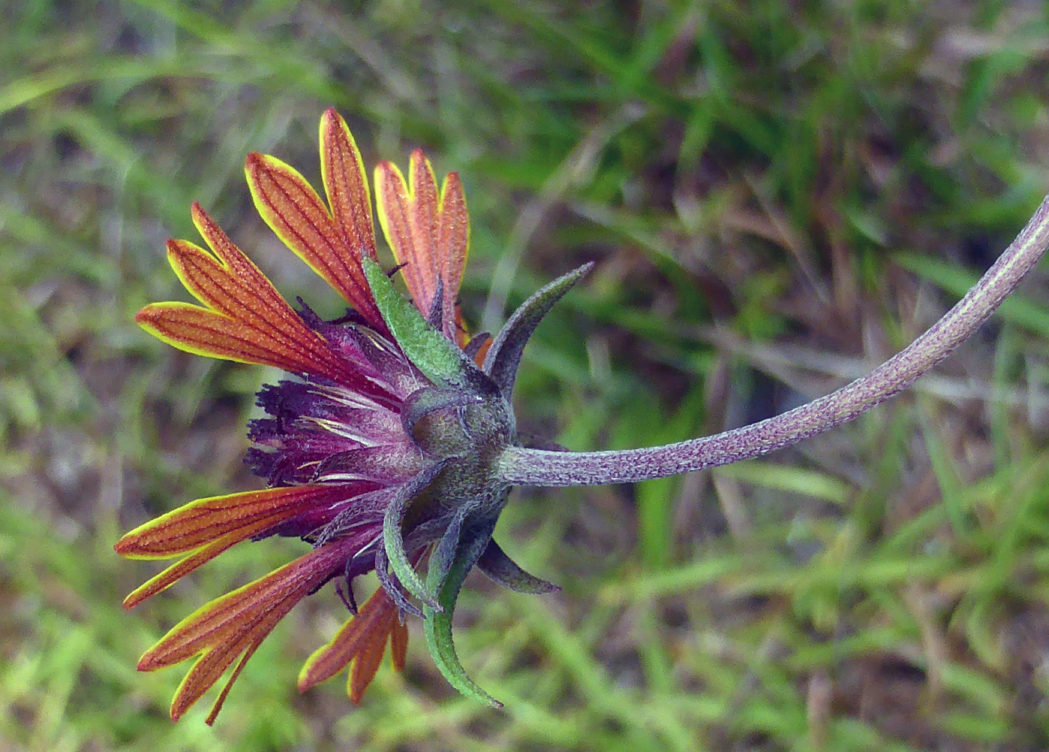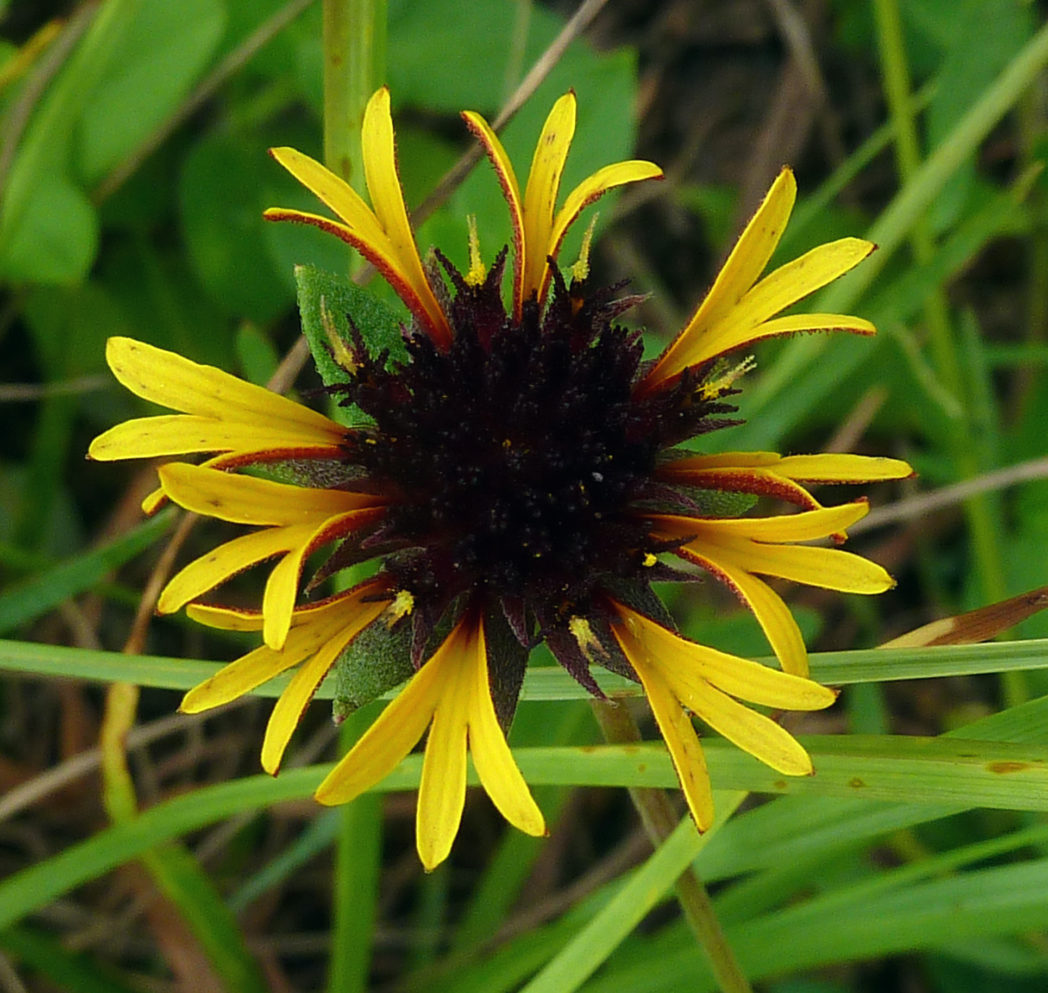Lanceleaf blanketflower
Pictured above: Lanceleaf blanketflower (Gaillardia aestivalis) by Eleanor Dietrich. Click on terms for botanical definitions. View post as a PDF.
Lanceleaf blanketflower is a short-lived perennial wildflower with compound, solitary blooms. Each flower is comprised of a compact head of reddish-brown to reddish-purple disk florets, loosely surrounded by 6 to 12 three-lobed ray florets. The florets are typically yellow with reddish-purple bases, but may vary from pinkish to red to purple to even whitish. Flowerheads are cupped at the base by long, lanceolate phyllaries. Stems are erect, rising from a small rosette of basal leaves. Leaves can be linear, elliptic or spatulate and have toothed or entire margins. Stem leaves are few to sparse and may be clasping. They are alternately arranged. Leaves, stems and phyllaries are scabrous. Seeds are borne in small (~1/16”) achenes.

Lanceleaf blanketflower occurs naturally in sandhills and xeric flatwoods. It typically blooms in summer through early fall and attracts a variety of pollinators.
Its cousin, Gaillardia pulchella, has a similar appearance, but its ray florets are not lobed and are more densely arranged around the center of disk florets. It also sprawls more than Gaillardia aestivalis, which is upright and erect.
Family: Asteraceae (Aster, daisy or composite family)
Native range: Panhandle, north and central peninsula
To see where natural populations of lanceleaf blanketflower have been vouchered, visit www.florida.plantatlas.usf.edu/.
Hardiness: Zones 8A–10A
Soil: Very dry, sandy soils
Exposure: Full sun to minimal shade
Growth habit: Up to 2’ tall
Propagation: Seed
Garden tips: Lanceleaf blanketflower does well in a mixed wildflower garden or in any sunny, well-drained spot. It is slightly smaller and not as aggressive as its cousin, Gaillardia pulchella. It is not typically commercially available, however, so your best bet is to collect seed or plant material from someone who is growing it in their landscape (with permission, of course).
For more information on other Gaillardia species, see these resources:
*A 2020 study suggests Gaillardia pulchella may not be native to Florida. Read the report here.

